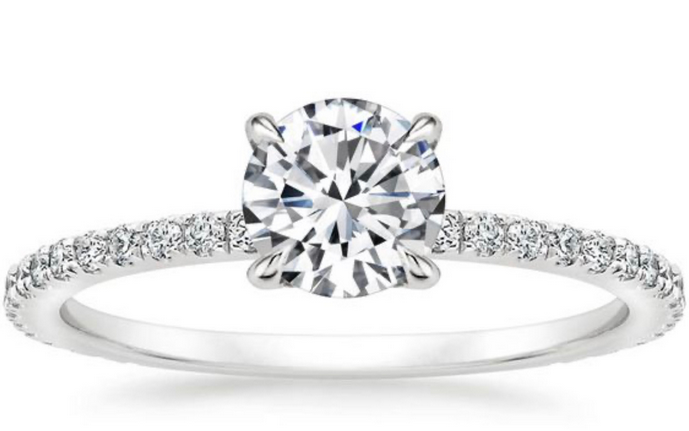If you’re looking at diamond engagement rings online, chances are you are close to that rock being on your finger! While you know what you like when you see it in a picture online, there is definitely investigation required when you are in person at a jewelry store to make sure you are getting the best diamond or gemstone for the price you are paying.
There are probably some terms you will hear while shopping that you are unfamiliar with. This blog will give you a head start in learning more to help you make the best decision. In this blog we are not going over the shapes of diamonds, rather the features of diamonds and bands.
The “Four Cs” – these include cut, color, clarity, and carat, and they determine the value of the stone.
Cut – A specific style or shape into which a gemstone is formed. Most cuts intend to alter or maximize how well the stone will sparkle and reflect light. Common cuts include princess, brilliant, Ascher, cushion, emerald, heart, oval, and pear. Some cuts work better with certain gemstones more than others.
Color – The diamond color is based on the absence of color. A chemically pure and structurally perfect diamond has no hue, like a drop of pure water, and consequently, a higher value.
Clarity – Evaluating diamond clarity involves determining the number and size of internal and external blemishes created upon formation of the diamond. No diamond is perfectly pure, but the closer it comes to purity, the better its clarity.
Carat – To put it simply, it is how much a diamond weighs. Diamond price increases with carat weight because larger diamonds are rarer. However, two diamonds of equal carat weight can have very different prices depending on the three other factors above!
So once you have your stone picked out then you are going to pick your setting. The most common are:
Bezel – The gemstone is protected and secured by being completely surrounded by the metal on all sides.
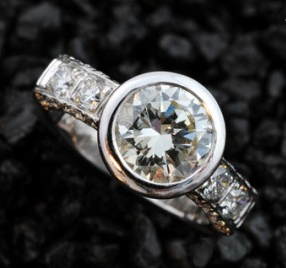
Claw/Prong – A claw setting holds a gemstone in place with little prongs or “claws”. Most rings have 4-6 prongs.
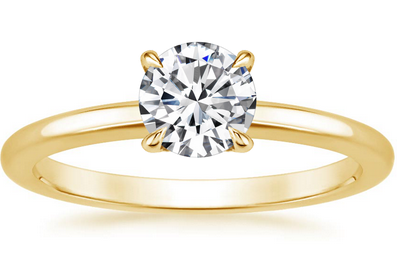
Channel/Pavé – These styles have multiple gemstones implanted into the ring band, but so closely that no metal can be seen in between. Alone these can be referred to as eternity bands:
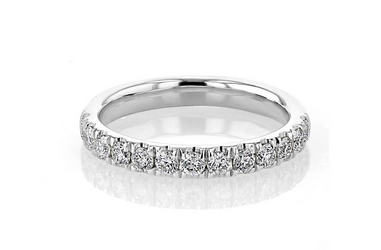
Halo – The halo setting refers to the placement of diamonds around a center stone. The halo setting makes the center stone appear larger and increases the sparkle.
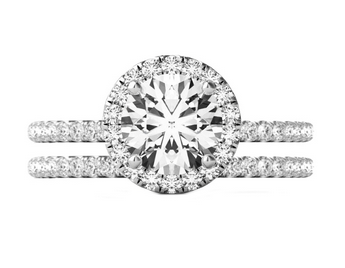
Tension – The tension setting is named for the tension of the metal band that secures the diamond in place; the result is that the diamond appears suspended between the two sides of the shank.
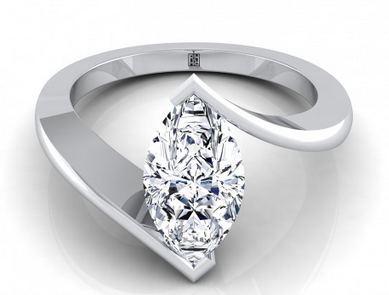
What about the band? Which is really just another term for the ring itself.
Bands can come in a number of different metals:
Alloy – most jewelry pieces are often sold as a mix of multiple metals because precious metals are not durable for the long term. For instance gold on its own is very soft and if it is alloyed with other metals it will last much longer. Often gold is mixed with other metals to create a different color such as mixing gold with copper to produce rose gold or with white gold to produce platinum.
What about diamond shapes? To make it easy here is a graphic with the most popular shapes:
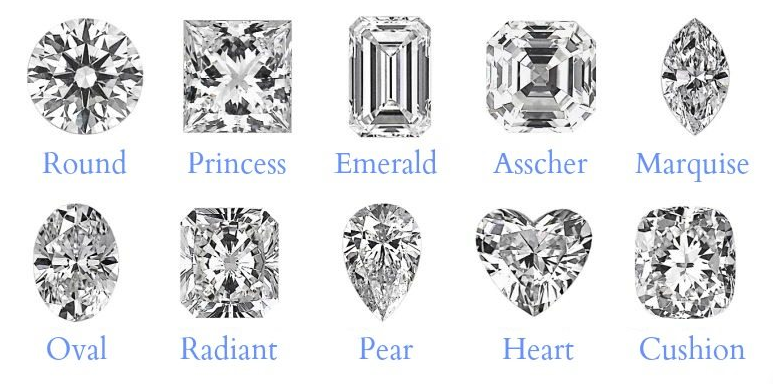
Some other terms you should be familiar with are:
Bridal Set
A matching set of rings, such as the engagement and wedding ring, which are meant to be worn together. A common bridal set includes one solitaire ring and an enhancer that creates the illusion of having two additional side-set stones.
Facet
This refers to a flat side (or layer) of a gemstone that results from it being cut into a certain style. Generally speaking, at least with diamonds, more facets mean better light reflection. The brilliant cut, which intends to maximize the sparkle of a diamond, features 58 facets.
Karat (K)
Sometimes misspelled as carat, but appreciated with a K. This term is used specifically for silver or gold, in reference to how pure the metal is. It may be accompanied or replaced by a stamp that shows the purity in percentage. Here are some examples for reference:
14K = 58.5% pure, or 585
18K = 75% pure, or 750
24K = 100% pure, or 1000
Satin Finish
Also known as a brushed or matte finish, a satin finish features many micro parallel scratches, which give it texture. It is popular in men’s rings.
Solitaire
A solitaire ring (or another jewelry piece) simply means that there is only one, single gemstone set upon it.
Now you will be armed with all the info you need to find the perfect symbol of your love! And after you get that beautiful ring, come to us and let us find your equally beautiful wedding dress!

